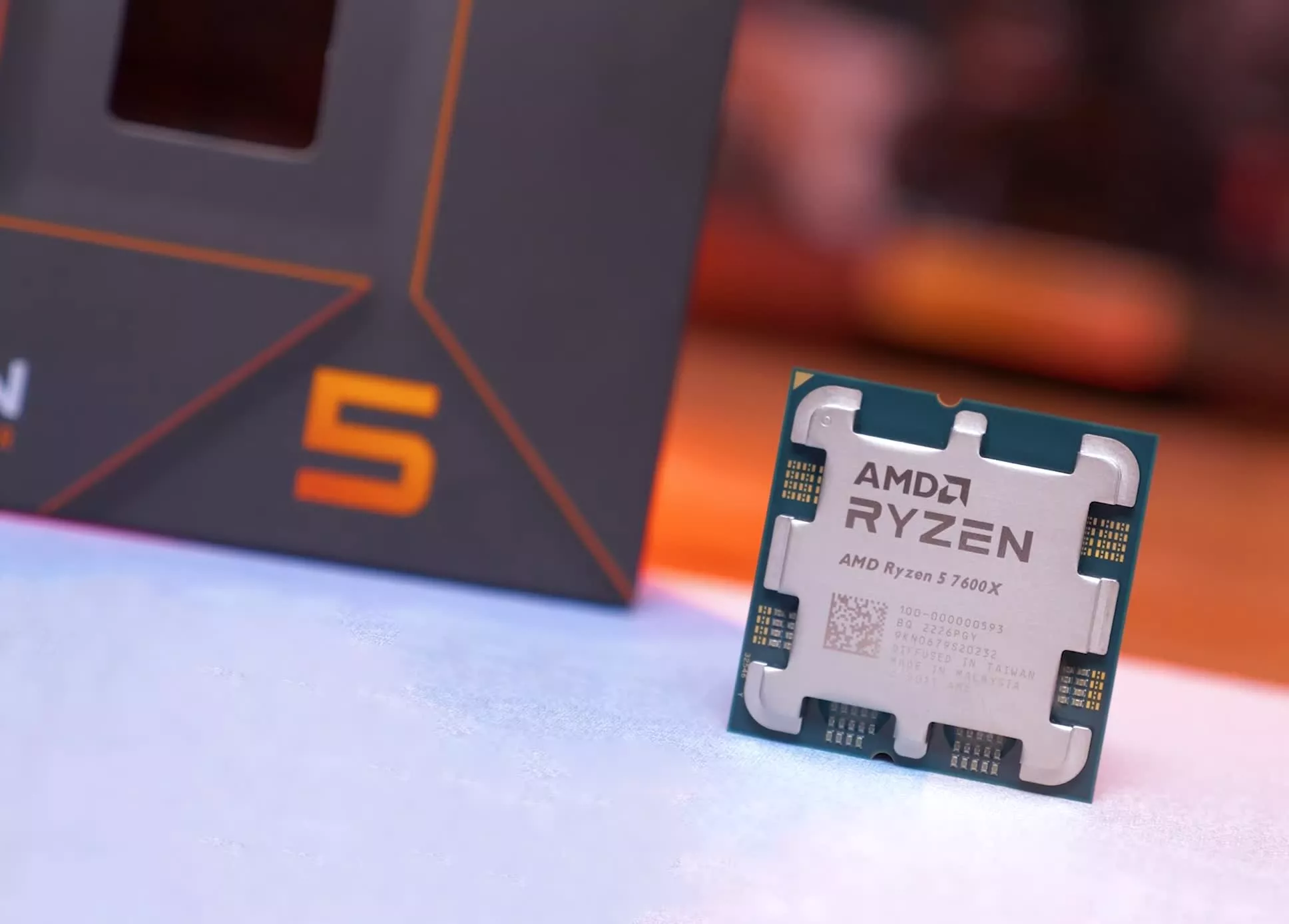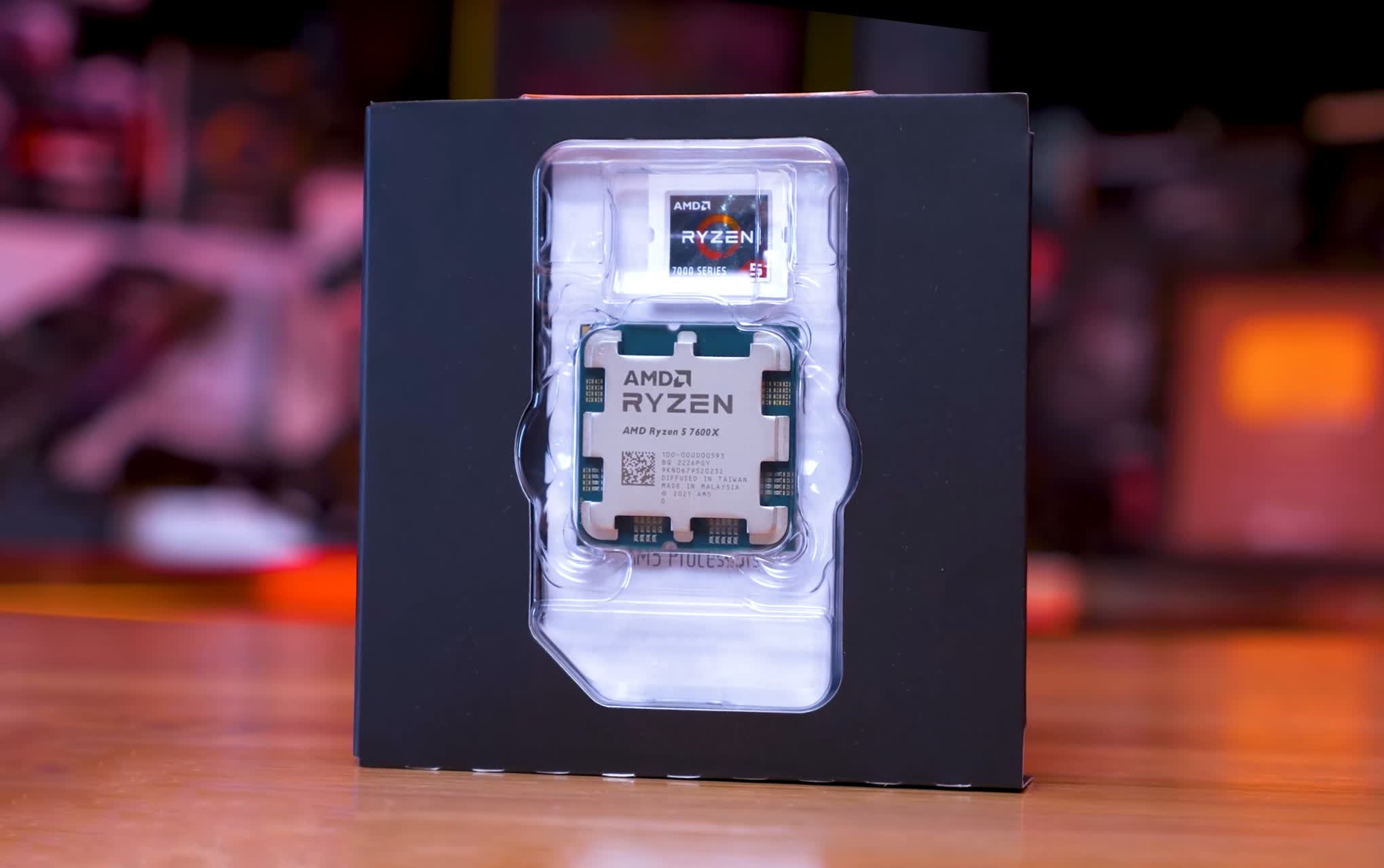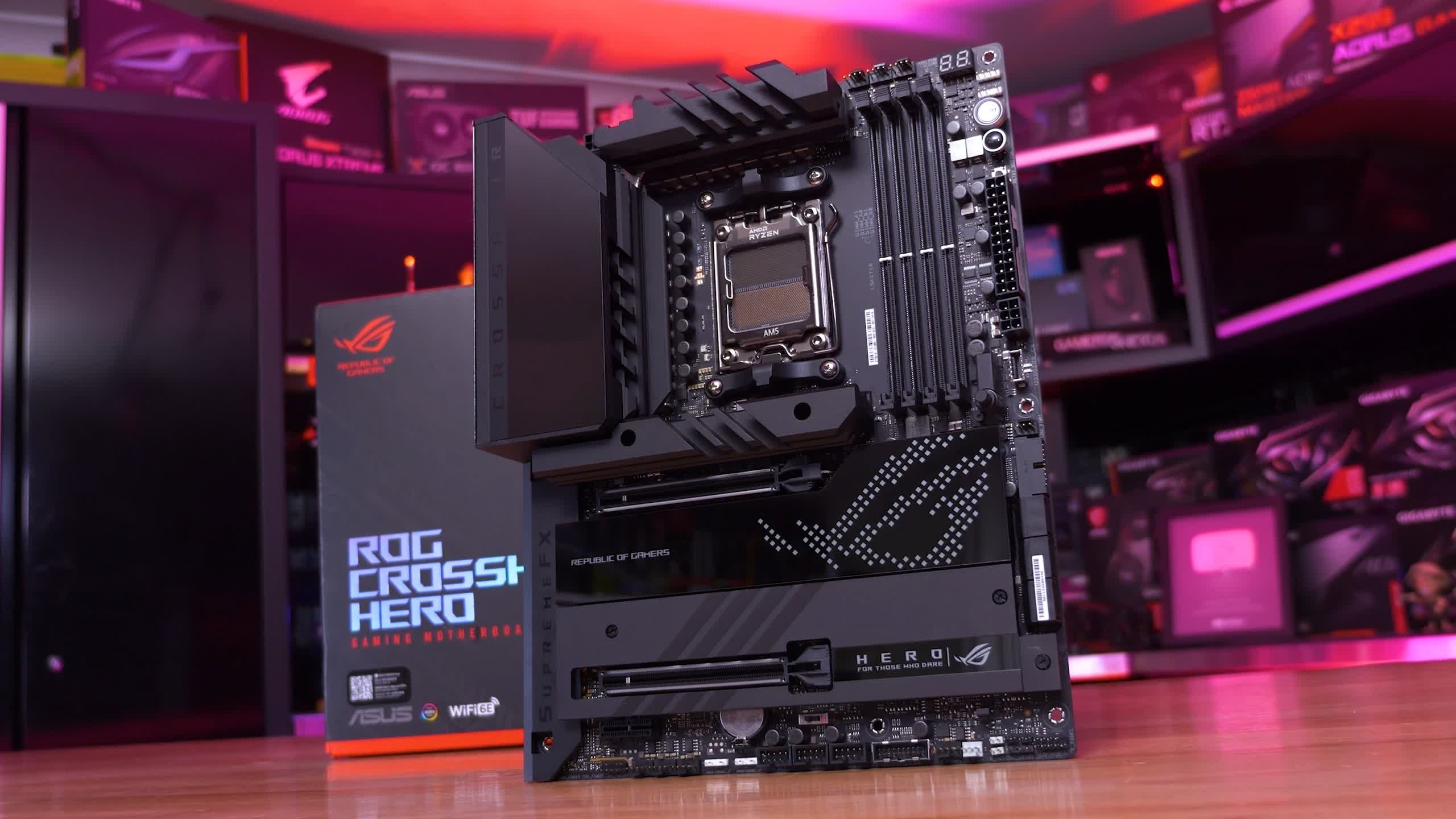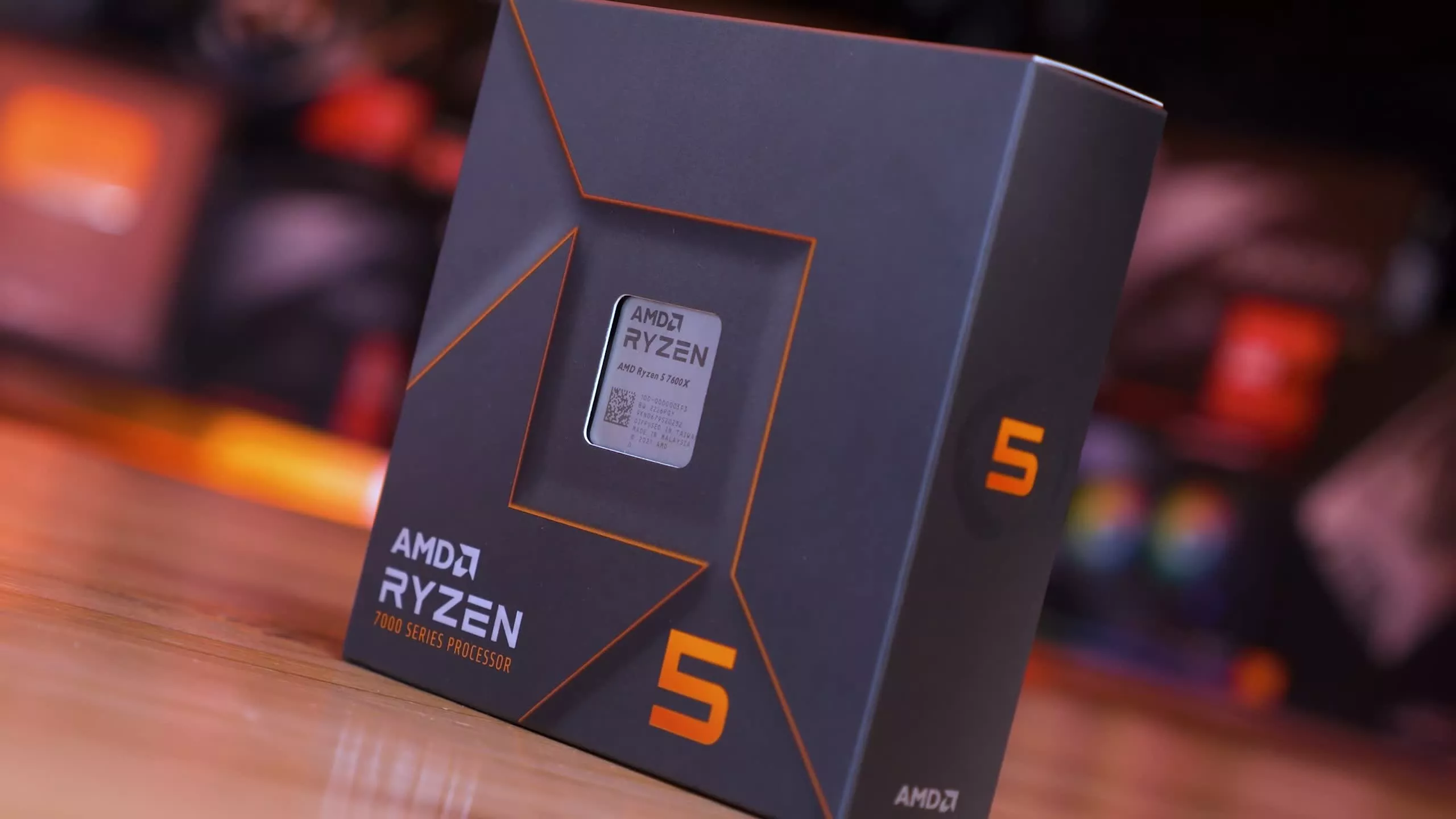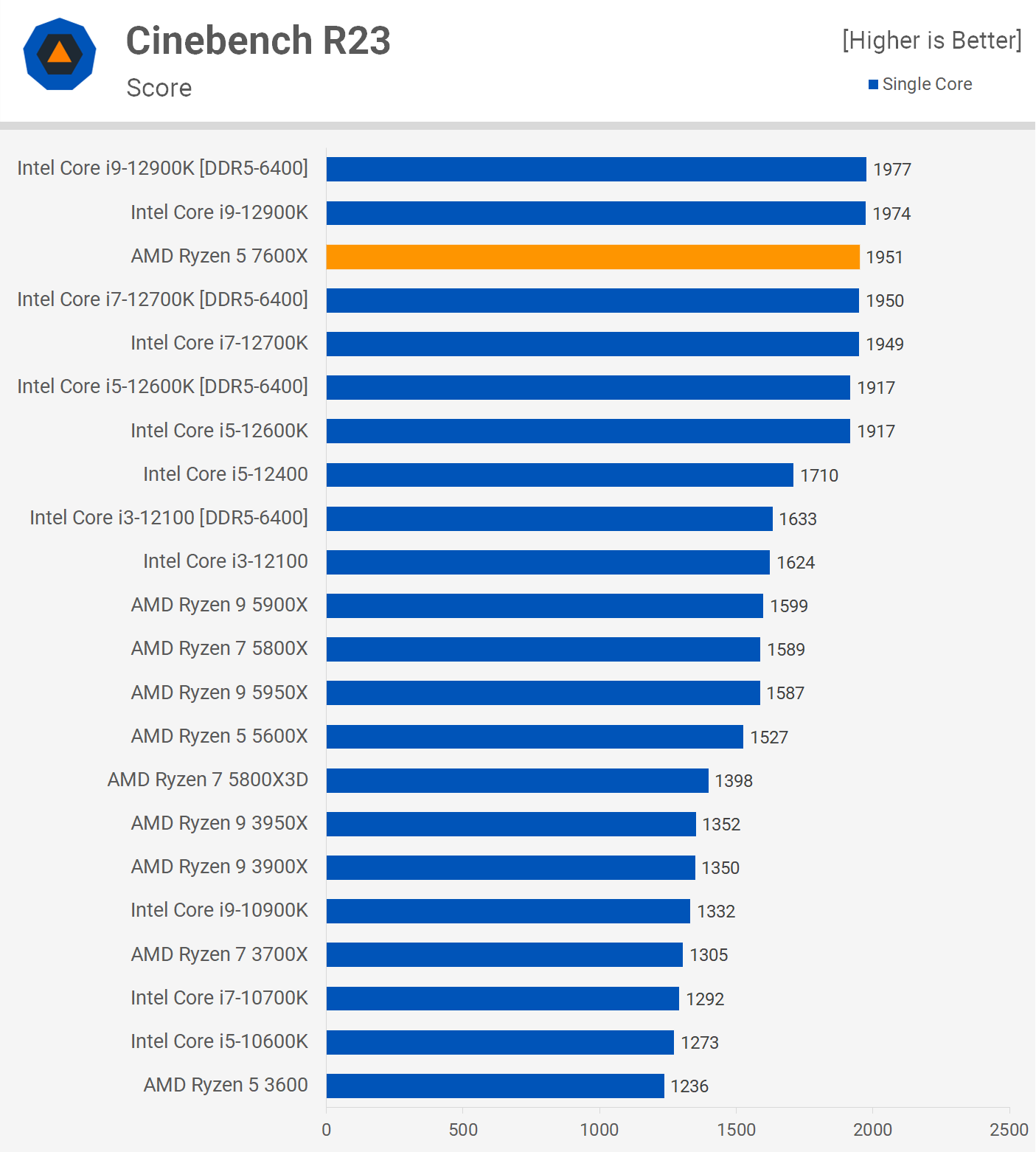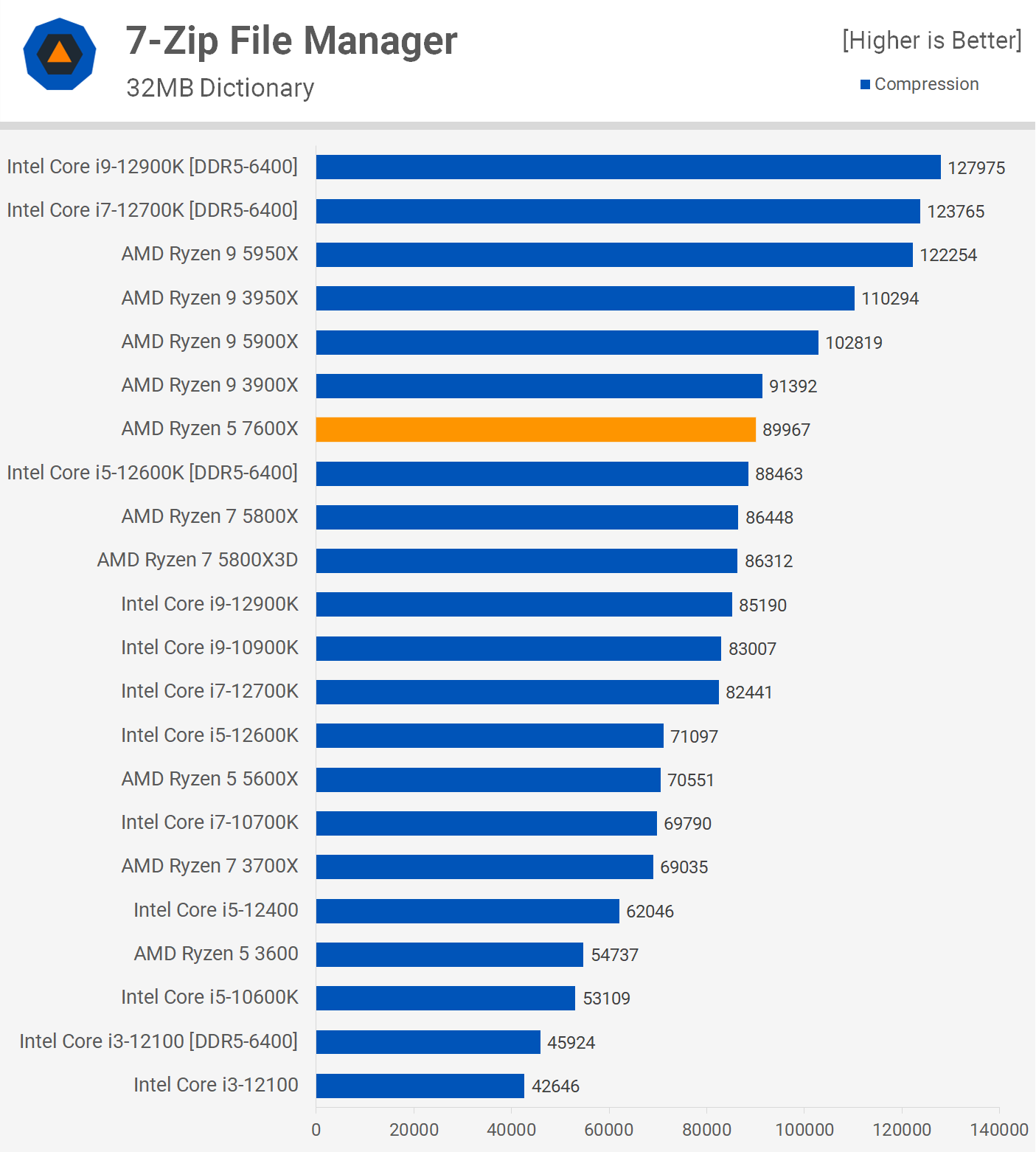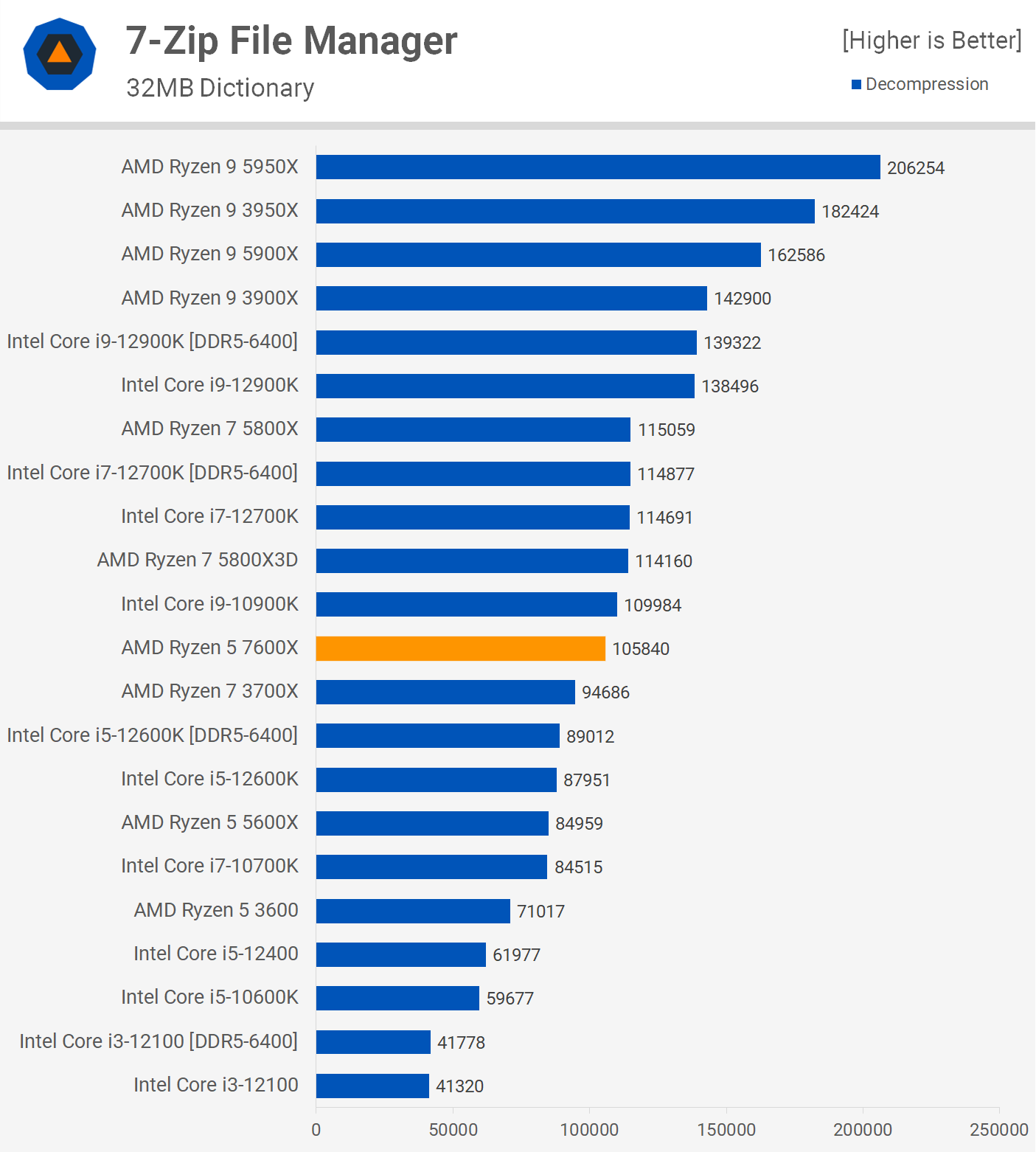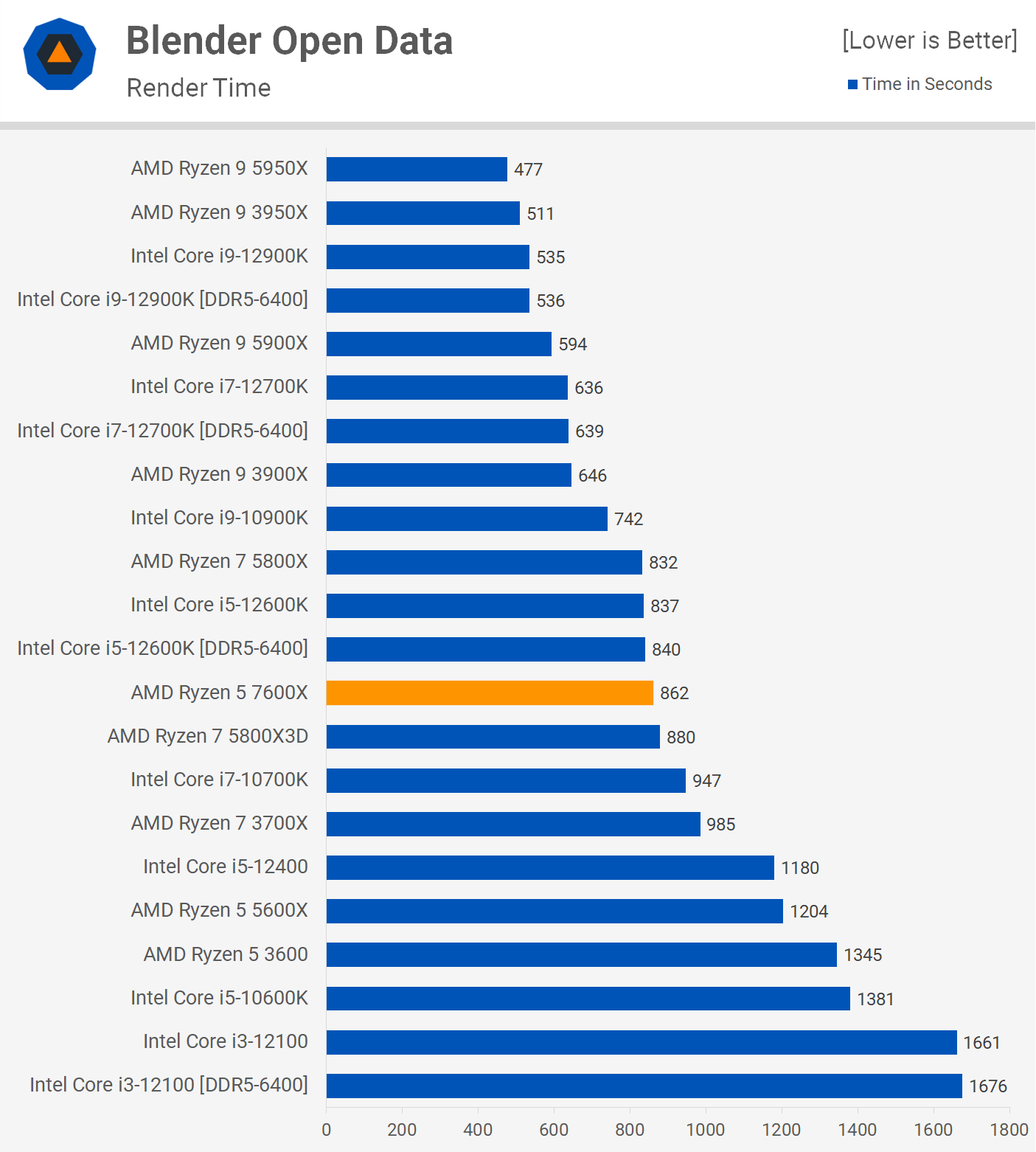Today we're checking out our first Ryzen 7000 series processor, the Ryzen 5 7600X. We've decided to start with the most affordable CPU in the line-up as we suspect this is the model most of you will be interested in, but not to worry as we also have upcoming reviews for the 7700X, 7900X and 7950X and those reviews will be published this week.
Instead of grouping all four CPUs into a single review we decided to take a closer look at each model, run a few interesting tests and compare each model to its competitors.
The Ryzen 5 7600X is a 6-core, 12-thread processor that clocks between 4.7 GHz and 5.3 GHz depending on the load, it's composed of a single 5nm Core Complex Die (CCD) along with a 6nm I/O die, packs 32MB of L3 cache, 6MB of L2, DDR5 support, 28 PCIe 5.0 lanes, a 105w TDP and is designed for the new AM5 socket.
When compared to Zen 3, new Zen 4 CPUs boost peak clock speeds by 16% to 5.7 GHz, improve IPC by 13%, double the L2 cache capacity, integrate an RDNA2 graphics solution and are built using TSMC's 5nm process.
Coming from the 5600X, the Ryzen 5 7600X is also arriving at $300, so it's a mainstream offering. While some might scoff at that price for a mere 6 cores, it's expected to be much faster than the 5600X, so perhaps the price will be easier to justify and by the end of this review we'll have our answer.
There's a lot more ground to cover with these new Ryzen CPUs, but we'll talk about many of the new features and changes as we work through the review. In anticipation for this launch, we've been busy updating all our CPU data for a few weeks and as a result we have 17 tested CPUs for comparison.
For the AM4 platform we've got a range of Zen 2 and Zen 3 CPUs, including but not limited to popular models such as the Ryzen 5 3600, Ryzen 7 3700X, and of course, the Ryzen 5 5600X.
Then on Intel's front we have some Intel 10th-gen Core models -- we decided to skip 11th-gen as that was a bit of a flop -- and 12th-gen Core series processors using DDR4-3200 dual-rank CL14 memory and DDR5-6400 single-rank CL32 memory. The likes of the Core i3-12100 up to the Core i9-12900K have been included for comparison.
Our AM5 test system was configured using the MSI MEG X670E ACE. AMD insisted all reviewers use the supplied DDR5-6000 CL30 memory, so that's what we've done. However, we have also added testing with DDR5-6400 memory, amongst other things and you'll see all of that in this review.
All testing was conducted using the GeForce RTX 3090 Ti, Windows 11 and Resizable BAR was enabled for all configurations. Now, let's get into it…
Clock Speeds
Before we dive into the blue bar graphs, here's a look at clock behavior in Cinebench R23. After an hour of load testing, the R5 7600X maintained an all-core frequency of 5.2 GHz using the be quiet! Pure Loop 2 FX 360mm liquid cooler installed inside the Silent Base 802 case.
Interestingly, despite claiming a maximum boost frequency of 5.3 GHz, we saw the 7600X regularly running its core clocked at 5.45 GHz while running Cinebench R23, this behavior was seen on the MSI MEG X670E ACE.
Application Benchmarks
Starting with the Cinebench R23 multi-core results, we see that the new 7600X is basically on par with the 5800X, a Zen 3 8-core/16-thread processor. So even though the 5800X packs 33% more cores, the frequency and IPC uplift of the Zen 4-based 7600X gets it side to side with the higher core count model.
With a score of just over 15,000 pts, the 7600X is 24% faster than the 3700X and amazingly just 6% slower than the 10-core/20-thread Core i9-10900K.
That said, critically it is 12% slower than the Core i5-12600K, so for core-heavy productivity workloads the 7600X will have its work cut out for it.
As expected, the single-core performance looks amazing, matching Intel Alder Lake Core i5 and i7 parts. When compared to the 5600X we're looking at a 28% improvement in single core performance and almost 60% boost from the old Ryzen 5 3600.
Moving on to the 7-Zip File Manager Compression test, we find strong performance from the 7600X and this time it's able to edge out the 12600K, even when pairing the Intel CPU with DDR5-6400 memory.
This means another 28% uplift from the 5600X as it was slightly faster than the 5800X and 5800X3D. In fact, we're really looking at 3900X-level performance which is insane when you think that CPU packs twice as many cores -- granted, older Zen 2 cores.
The decompression performance is mixed, when compared to the 3900X it's now 26% slower, but it was only 8% slower than the 5800X. Meanwhile, it matched the Core i9-10900K and edged the 12600K out by almost 20%, and that's with the Alder Lake Core i5 using DDR4-6400 memory.
Next, we have the Blender Open Data benchmark where the 7600X is neck and neck with the Core i5-12600K, making it slightly faster than the 5800X3D, or slightly slower than the 5800X.
Overall another impressive result that sees the new hexa-core Zen 4 outperforming its predecessor by a whopping 40% margin.
